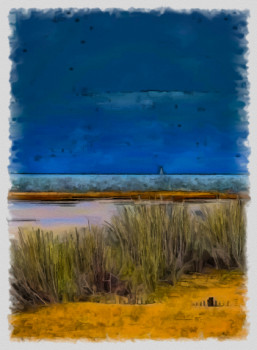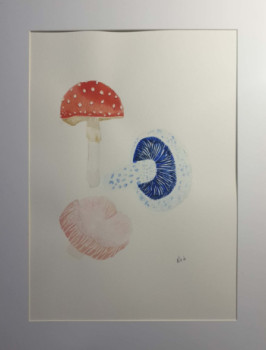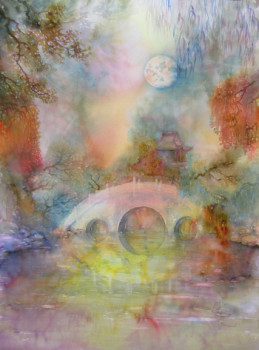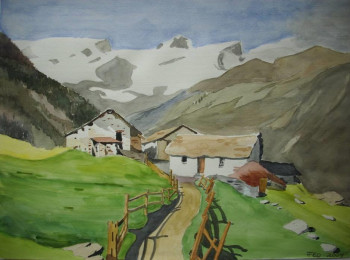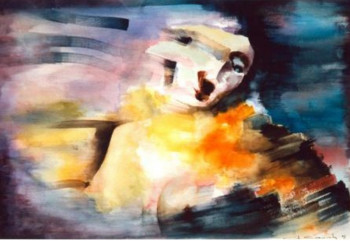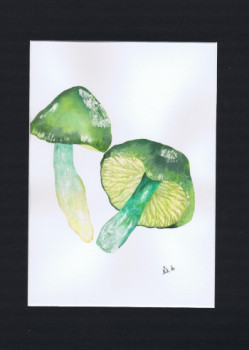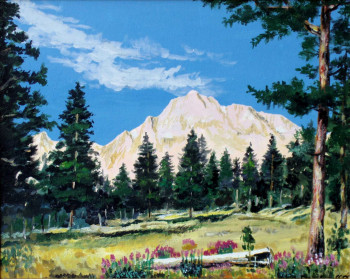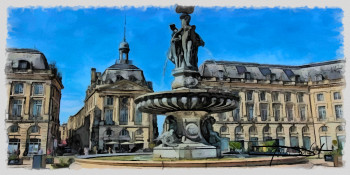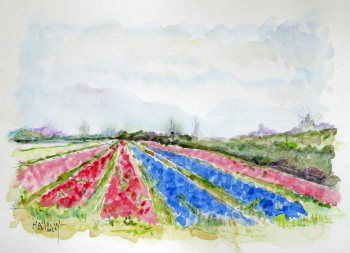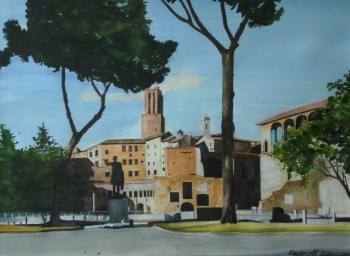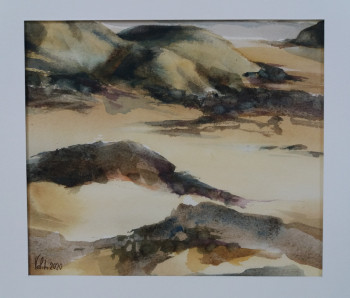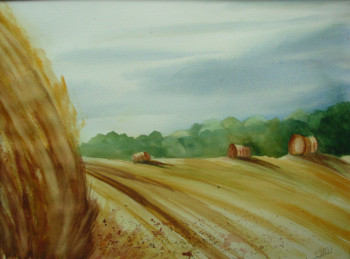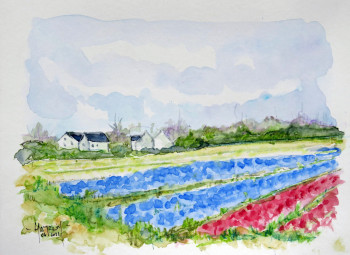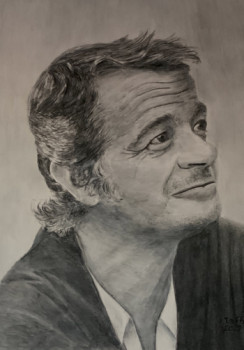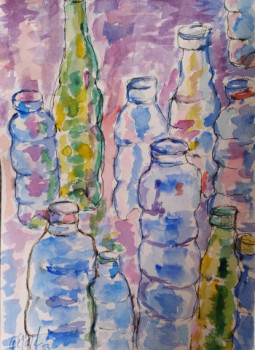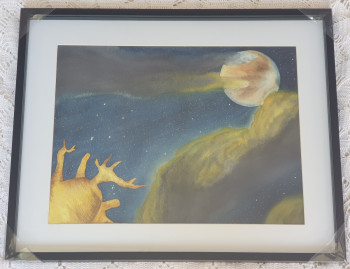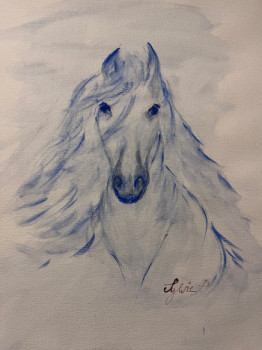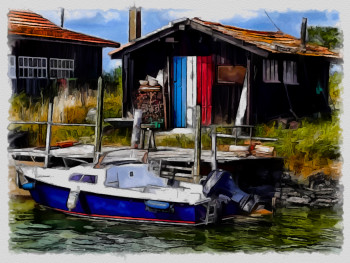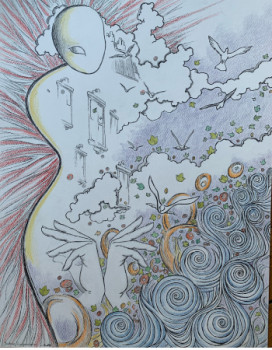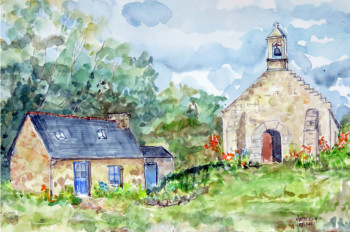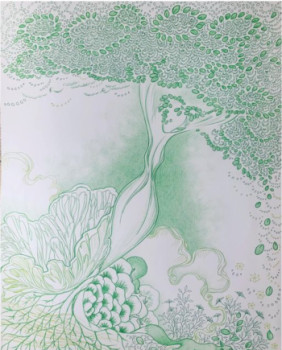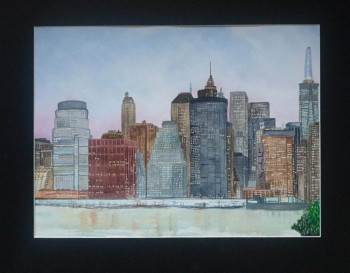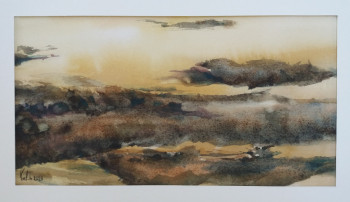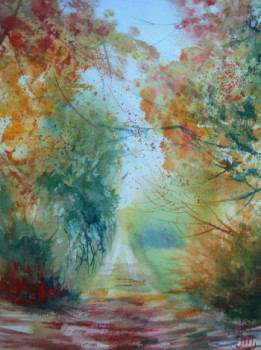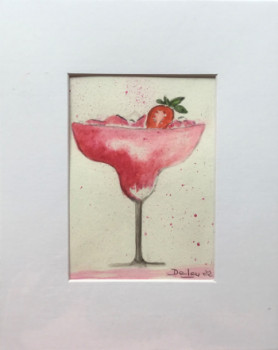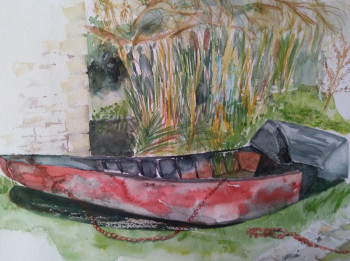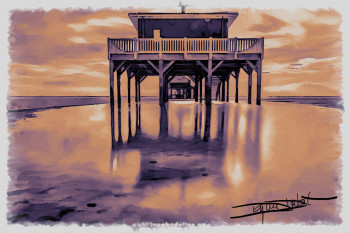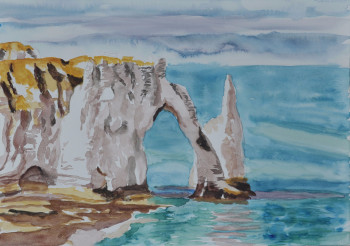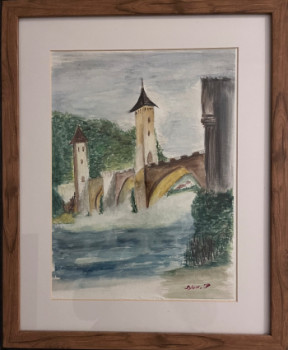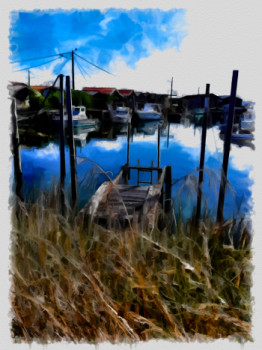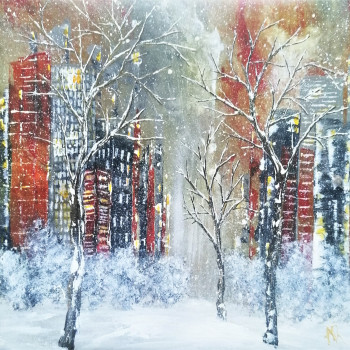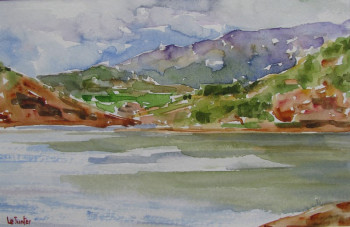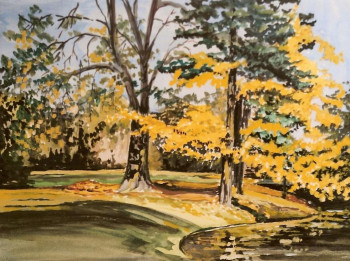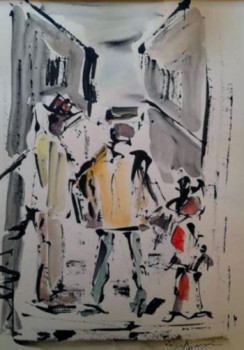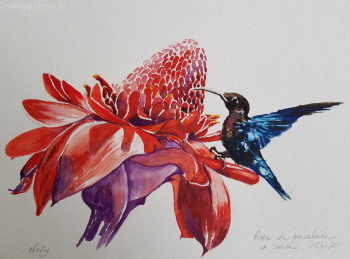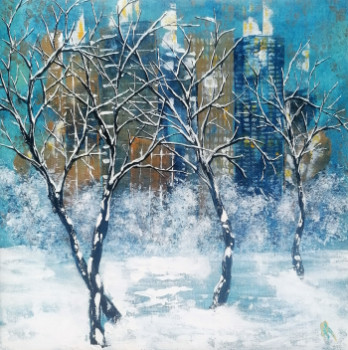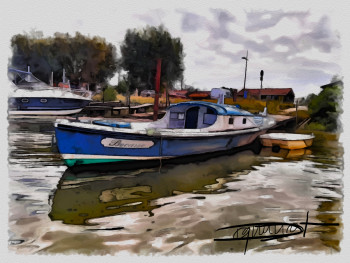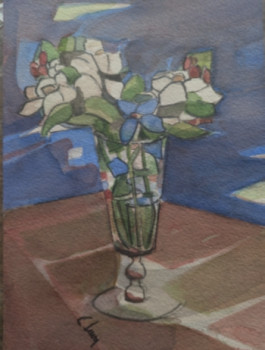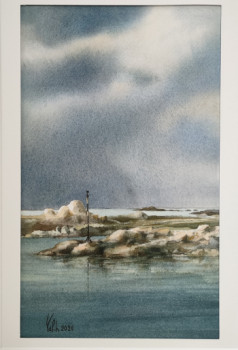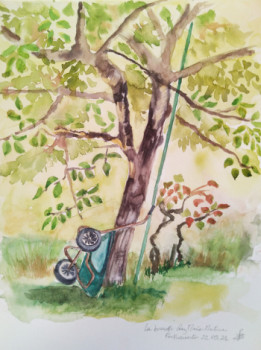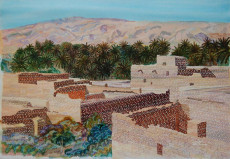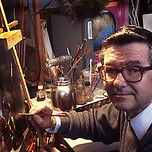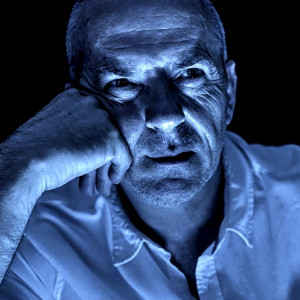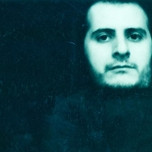
Watercolor paint
Watercolor is a transparent water-based paint, as opposed to gouache, which is opaque but of identical composition. We use the same word to designate watercolor paint and works painted with this technique.(...)
Many artists have explored watercolor painting in their studies, projects and outdoor work, due to the small material footprint and the rapid execution of this technique.
Style and techniques
Tools
Watercolor is sold in buckets of dry paint or in tubes of pasty paint, used to fill the buckets of travel boxes. The colors are divided into several qualities, depending on the color. study » and « fine » « extra-fine ».
Derivatives
There are also watercolor inks, dyes that remain soluble in water. The watercolor pencil, as for; him, is a colored pencil dedicated to to precise details. These tools, despite their name, have a composition different from that of watercolor paint.
Papers
While there are canvases specially designed for watercolor painting, the most common support remains paper.
This must be permeable and thick enough to withstand abrasion. humidity. Its color is generally white, cream or ivory in order to show through under the layers of color. Finally, a good watercolor paper must be grainy because the grain influences the final result.
Brushes
Sable hair brushes are very appreciated for their precision and their water retention power. The squirrel hair is just as suitable. a professional practice because of its capillarity. There are also brushes made of soft synthetic fibers, or even brushes with a special texture. tank widely used outdoors.
Techniques
The work Watercolor is most often executed on blank paper, and is sometimes preceded by watercolor. light sketches in gray pencil. The transparency of the watercolor paint becomes evident when the paper dries. It is the whiteness of the latter which brings the maximum intensity to the image. bright the final work.
- Dry technique
The dry technique is the oldest technique, but also the most widespread. It consists of; Apply the diluted paint directly to the support to allow the color of the paper to show through. The details are installed once the first layer is completely dry, and then the details are applied. using less diluted shades.
Apply the lightest shades first, gradually moving towards the darkest.
- Wet technique
Technique in the wet requires wetting the paper before applying paint. This makes it possible to obtain intense colored surfaces, but also to merge shades or to remove paint without damaging the support.
Many effects are possible, from fades to gradients, including camos... A good mastery of the water cycle on paper is necessary to try it, since the painter intervenes according to the degree of the water cycle. humidity support.
Famous Watercolor Artists
All the great masters of classical painting used watercolor in their preparatory work. However, it was the British painter William Turner who brought this technique to the forefront for the first time, by working on its credentials to a greater extent. watercolor.
Many artists have subsequently worked on this material as a technique to full part:
- The German Renaissance painter and draftsman Albrecht Dürer is one of the precursors of this technique. He paints in particular, the end of the 15th century, the first landscape watercolor in the history of Western art representing a specific place;
- William Turner, also known as J. M. W. Turner, explored extensively this technique in his works and then to illustrate his travel chronicles. The end of his career saw the production of this painting multiply.
- The American painter Thomas Moran created numerous landscape watercolors. His work has notably contributed to officially recognize what would become Yellowstone National Park in 1892, horse between the states of Montana, Idaho and Wyoming.
- The American botanist John James Audubon completed this work. all his naturalistic ornithological renderings watercolor in his famous work The Birds of America.
- Egon Schiele, Austrian painter and draftsman, produced more than 3,000 works combining drawing, watercolor and gouache;
- The famous Pablo Picasso made numerous watercolors throughout his life;
- The New York painter Edward Hopper was also keen on this technique, although his emblematic paintings are oil-paintings oil.
- Paul Klee, one of the greatest artists of the early 20th century, experimented extensively with art. its relationship with the « kingdom of color » via watercolor during his career.
- The Swedish artist Carl Larsson's preference for transparent and vaporous shades led him to leave the painting behind oil to express itself almost exclusively through through watercolor during his career;
- The works of Marie Laurencin, a Franco-German painter, mainly include engravings, watercolors and drawings;
- French painter Raoul Duffy acquired an early mastery of watercolor at the start of his career , although his work includes numerous canvases and drawings, lithographs, tapestries and other fabrics...
- Charlotte Keraudren, watercolor artist and notebook maker, mainly uses drawing and watercolor in her works and notebooks.
- Portraitist Stéphanie Ledoux also uses watercolor in addition to ink, drawing and gouache that we find in most of his works.
